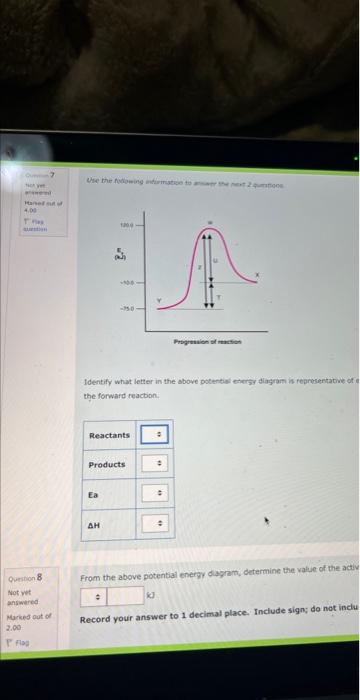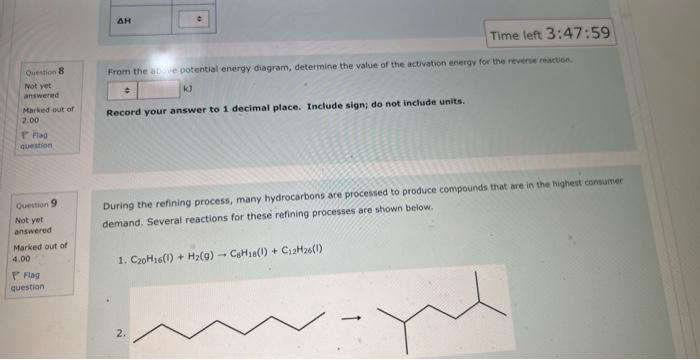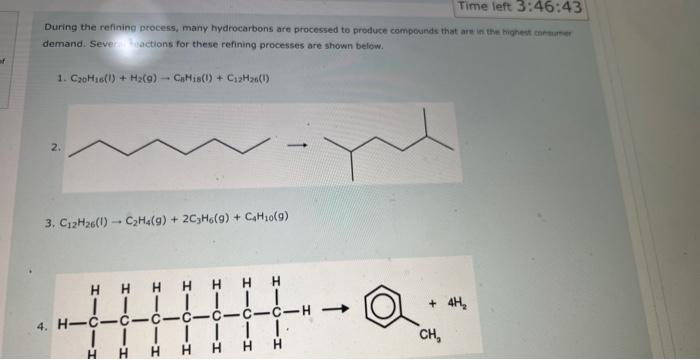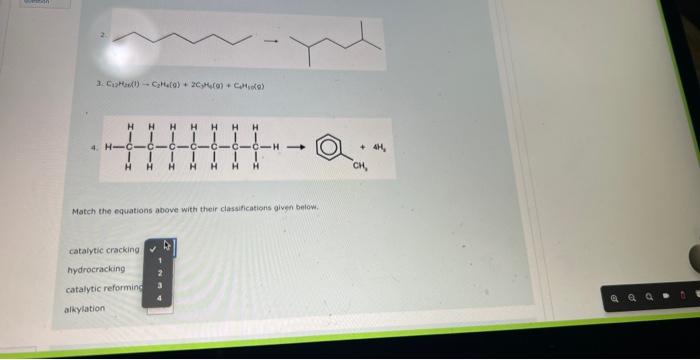Identify what letter in the sbove potentia ehergy dias an is reprebentative of the forward reaction. From the abgve potential energy diproth, determine the value of the activi Record your answer to 1 decimal place. Include sign; do not inclu gram, determine the value of the actwation energy for the reverse chation. place. Include sign; do not include units. From the ab-ye potential energy diagram, determine the yalue of the actuvation eneray for the reverse feaction. Record your answer to 1 decimal place. Include sign; do not include units. Quevtion 9 During the refining process, many hydrocarbons are processed to produce compounds that are in the highest consumer Not yet demand. Several reactions for these refining processes are shown below. answered Marked out of 4.00 1. C20H16(I)+H2(g)C3H18(1)+C22H26(I) 2. During the refining process, many hydrocarbons are processed to produce compounds that are in the highest car a demand. Seve tiuctions for these refining processes are shown below. 1. C20H16(1)+H2(g)C4H18(1)+C12H26(1) 2. 3. C12H26(1)C2H4(g)+2C3H6(g)+C4H10(g) 4. Match the equations above with their classifications given below. Identify what letter in the sbove potentia ehergy dias an is reprebentative of the forward reaction. From the abgve potential energy diproth, determine the value of the activi Record your answer to 1 decimal place. Include sign; do not inclu gram, determine the value of the actwation energy for the reverse chation. place. Include sign; do not include units. From the ab-ye potential energy diagram, determine the yalue of the actuvation eneray for the reverse feaction. Record your answer to 1 decimal place. Include sign; do not include units. Quevtion 9 During the refining process, many hydrocarbons are processed to produce compounds that are in the highest consumer Not yet demand. Several reactions for these refining processes are shown below. answered Marked out of 4.00 1. C20H16(I)+H2(g)C3H18(1)+C22H26(I) 2. During the refining process, many hydrocarbons are processed to produce compounds that are in the highest car a demand. Seve tiuctions for these refining processes are shown below. 1. C20H16(1)+H2(g)C4H18(1)+C12H26(1) 2. 3. C12H26(1)C2H4(g)+2C3H6(g)+C4H10(g) 4. Match the equations above with their classifications given below











